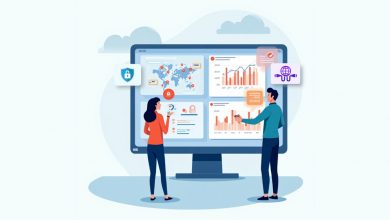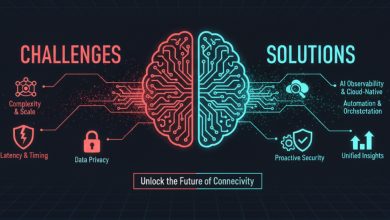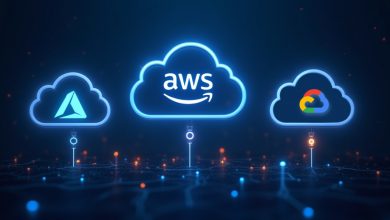Complete Guide to AI-Powered Network Monitoring
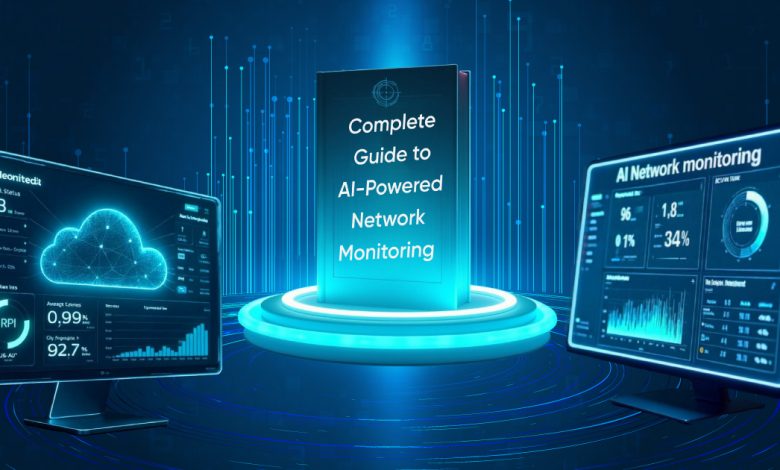
Introduction
Last week, I spoke with a VP of IT Operations who summed up his frustration perfectly: “We’ve got seventeen different monitoring dashboards, and somehow we’re still blind when things go wrong.
His team was drowning in alerts—over 3,000 per day. Yet when their payment processing system crashed during Black Friday, it took four hours to find the root cause. The CEO wasn’t happy, and frankly, neither was anyone else.
This scenario plays out daily across enterprises worldwide. You’ve invested millions in monitoring tools, but you’re still playing whack-a-mole with issues. Your network monitoring software generates more noise than a rock concert, and translating tech-speak for the C-suite feels like teaching quantum physics to a five-year-old.
This scenario plays out daily across enterprises worldwide. You’ve invested millions in monitoring tools, but you’re still playing whack-a-mole with issues. Your network monitoring software generates more noise than a rock concert, and translating tech-speak for the C-suite feels like teaching quantum physics to a five-year-old.
Here’s the thing: traditional monitoring is broken. But there’s a better way forward, and it starts with understanding how AI is completely changing the game.
Understanding AI-Powered Network Monitoring
What Sets AI Monitoring Apart?
Remember when we thought having dashboards was revolutionary? Those days feel quaint now.
Traditional monitoring works like a smoke detector; it screams when something’s already on fire. You set thresholds (CPU above 80%? ALERT!), and when they’re crossed, alarms go off. The problem? By then, users are already complaining.
AI monitoring tools flip this model on its head. Think of it like having a seasoned engineer who knows your systems inside and out, watching everything 24/7. Except this engineer never sleeps, never takes vacation, and can process millions of data points simultaneously.
Here’s what actually happens under the hood:
Your AI observability platform learns your network’s personality. Just like you know your car’s weird noise means it needs oil, AI learns that a specific pattern of latency spikes on Tuesday mornings means your database is about to have a bad day.
But the real game-changer? These systems don’t just spot problems; they explain them in plain English. No more “Error 0x80004005.” Instead, you get, “Your Chicago customers can’t complete purchases because the inventory database is responding slowly due to a memory leak in the pricing service.”
The Evolution from Reactive to Predictive
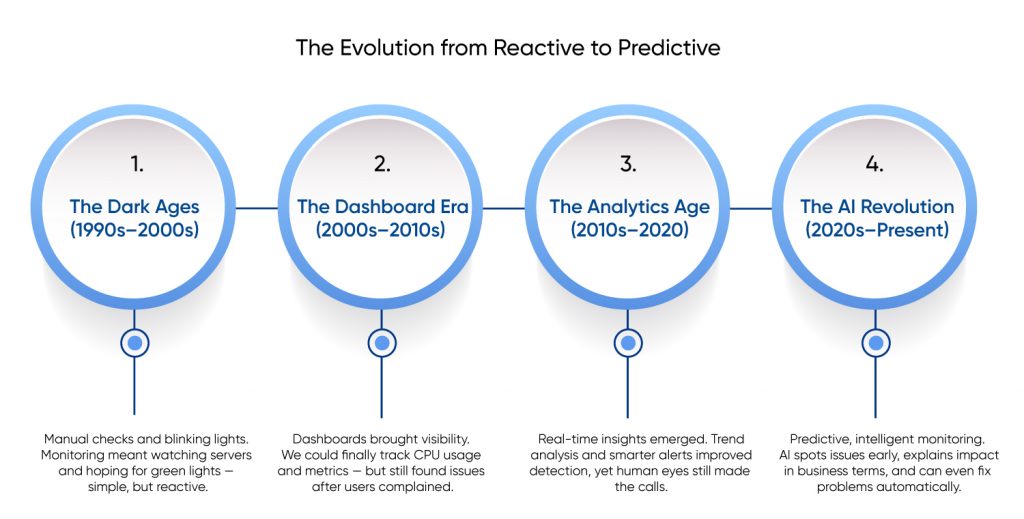
I’ve been in this industry long enough to watch network monitoring evolve from blinking lights on a server rack to today’s AI-powered systems. Let me break down this journey:
The Dark Ages (1990s-2000s): We literally watched server lights and hoped for the best. Green good, red bad. Simple times.
The Dashboard Era (2000s-2010s): Suddenly we could see CPU usage from our desks! Revolutionary, but still reactive. Problems showed up on dashboards after angry users called.
The Analytics Age (2010s-2020): Real-time network monitoring arrived. We could spot trends and set smarter alerts. Better, but still required human interpretation.
The AI Revolution (2020s-Present): Full-stack observability meets artificial intelligence. Systems predict failures, explain issues in business terms, and often fix problems automatically.
The difference is staggering. One of our clients recently told me their AI monitoring software prevented a major outage by detecting subtle pattern changes three days before their legacy system would have noticed anything wrong.
Make your Network monitoring Simplified with ScoutITAi
Key Components of Modern AI Observability Platforms
1. Unified Data Ingestion
Here’s a dirty secret: most enterprises use between 10 and 20 different monitoring tools. Each speaks its own language, shows its own metrics, and requires its own expertise.
Modern observability platforms act like universal translators. They’ll talk to your Splunk deployment, shake hands with Dynatrace, and have coffee with your legacy network management software. The result? One unified view across:
- Your creaky on-prem servers that nobody wants to touch
- Those shiny AWS instances you migrated to last year
- The Azure environment your DevOps team loves
- That one critical app is still running on bare metal because “if it ain’t broke…”
This isn’t just convenient; it’s transformative. Imagine troubleshooting an issue that spans multiple systems without switching between seventeen browser tabs. That’s the reality with proper AI observability and unified monitoring across web apps, cloud, and on-prem environments .
2. Intelligent Pattern Recognition
Traditional monitoring is like a guard who only knows to shout when someone runs past. AI monitoring is like Sherlock Holmes; it notices when things are slightly off and deduces what’s about to happen.
Take these real techniques modern platforms use:
Monte Carlo Simulations: Remember statistics class? This is like running your network through thousands of “what if” scenarios. What if traffic doubles? What if this server fails? The AI runs these simulations constantly, spotting dangerous combinations before they occur.
Six Sigma Analysis: Borrowed from manufacturing, this spots tiny deviations that compound into big problems. Like how a 0.1% increase in database query time can cascade into a 30% slowdown for users.
Adaptive Moving Averages: Your network at 9 AM Monday is different from 3 AM Sunday. AI monitoring tools understand these patterns and adjust expectations accordingly. No more false alarms just because it’s patch Tuesday.
3. Natural Language Processing
This is where things get magical. Instead of cryptic alerts, you get insights like
- Website performance degraded 23% for mobile users in Texas after the latest app update.
- The database backup job will likely fail tonight due to insufficient storage—you need 47GB more space.
- That weird spike in API calls? It’s from a partner integration that’s retrying failed requests every 3 seconds.
One CTO told me this feature alone justified their investment: “My board finally understands what we do because I can show them insights in plain English, not tech hieroglyphics.”
Benefits of AI-Powered Network Monitoring
1. Dramatic Reduction in Mean Time to Resolution (MTTR)
Let me paint you a picture of troubleshooting before and after AI:
Before: Alert fires. Engineer checks dashboard #1. Nothing obvious. Checks dashboard #2. Maybe something? Digs through logs. Calls database team. They check their tools. Two hours later, someone notices a correlation. Four hours total to fix.
After: AI detects anomaly. Immediately correlates across all systems. Identifies root cause. Suggests a fix. The engineer validates and implements. Twenty minutes total.
I watched a client reduce their MTTR from 4.5 hours to 18 minutes. That’s not a typo. Their payment processing issue that would’ve cost them $50K per hour in lost sales? Fixed before customers noticed.
2. Proactive Issue Prevention
Here’s where AI really shines. It’s like having a crystal ball, except it actually works.
A retail client of mine discovered their AI monitoring platform predicted Black Friday traffic would overwhelm their checkout system in September. With multi-location monitoring in place, they had two months to upgrade infrastructure. Result? Their smoothest holiday season ever, while competitors crashed and burned.
The AI spotted a pattern: slight memory leaks in their payment service that only manifested under specific conditions. Conditions that perfectly matched predicted Black Friday traffic patterns. No human would’ve connected those dots.
3. Elimination of Alert Fatigue
True story: I once met an engineer who had 47,000 unread alert emails. He’d given up. His email filter sent them straight to a folder titled “Probably Nothing.”
AI observability changes this completely. Instead of thousands of alerts, you might get a dozen per day. But these dozen are real issues that need attention. One platform I work with reduced alerts by 94% while actually catching more real problems.
How? AI understands context. It knows that CPU spikes during backup windows are normal. It knows your e-commerce site gets hammered at lunch. It only alerts when something is genuinely wrong.
4. Business Alignment and ROI Visibility
This might be the biggest win. IT has always struggled to demonstrate value in business terms. Try explaining to your CFO why monitoring tools matter when all they see is cost.
AI platforms translate technical wins into business outcomes:
- Prevented 4 hours of downtime = $2.3M in saved revenue
- Optimized cloud resources = $140K monthly savings
- Improved page load time = 12% increase in conversions
Suddenly, IT isn’t a cost center—it’s a profit protector.
Implementation Best Practices
Starting Your AI Monitoring Journey
After helping dozens of enterprises deploy AI observability, I’ve learned what works and what doesn’t. Here’s your roadmap:
Step 1: Stop Trying to Boil the Ocean
Don’t attempt to monitor everything on day one. Pick your most critical, problematic, or valuable system. Get a win there first.
One client started with just their checkout system. Six weeks later, they’d prevented two would-be outages and had buy-in to expand everywhere.
Step 2: Inventory Your Current Mess
List every monitoring tool you’re using. Yes, even that ancient script Bob from networking wrote in 2015. You’ll be shocked how much redundancy exists.
Step 3: Choose Your Platform Wisely
Look for:
- Proven integration with your existing tools (don’t trust “we integrate with everything” claims without proof)
- Actual AI capabilities, not just rebadged analytics
- Business-friendly reporting that your CEO will understand
- Vendor stability (you don’t want your monitoring vendor going under)
Step 4: Start Small, Win Big
Pick 2-3 use cases that will show immediate value:
- That system that pages people at 3 AM twice a week
- The mysterious slowdown that happens every month-end
- The integration that fails silently until customers complain
Maximizing ROI from AI Observability
Let the AI Do Its Job: The hardest part for experienced engineers? Trusting the AI. We’re used to being the experts. But when the AI says there’s a problem brewing, listen. It’s usually right.
Share the Wealth: Don’t keep insights locked in IT. Share weekly reliability reports with business stakeholders. Show them you’re preventing problems, not just fixing them.
Iterate and Improve: AI platforms get smarter over time. Feed them feedback. Mark false positives. Confirm accurate predictions. You’re training your new digital team member.
Measure Everything: Track your before/after metrics religiously:
- MTTR reduction
- Prevented outages
- Cost savings
- Team productivity
You’ll need these numbers to justify expansion and prove value.
Real-World Applications
Enterprise E-commerce
A major fashion retailer I worked with had a problem: their site slowed to a crawl every time they launched new products. Traditional monitoring showed everything was “fine”—CPU normal, memory okay, network stable.
Their new AI observability platform spotted the issue in two days: a perfect storm of cache misses, database locks, and CDN configuration that only manifested under specific traffic patterns. The AI even predicted which future product launches would trigger the issue.
Results:
- Site performance improved 73% during launches
- Cart abandonment dropped 31%
- Revenue increased $4.2M in six month
Healthcare Network Monitoring
A hospital network faced a nightmare scenario: EMR (Electronic Medical Record) systems going down randomly, putting patient care at risk. They had network monitoring tools, but couldn’t predict failures.
After implementing AI-powered monitoring:
- Predicted and prevented 14 would-be outages in the first quarter
- Reduced unplanned downtime by 94%
- Achieved 99.99% uptime for critical systems
The AI discovered patterns humans missed: failures correlated with specific combinations of backup jobs, shift changes, and database maintenance windows.
Financial Services
A regional bank was hemorrhaging money from ATM network failures. Their legacy monitoring showed problems after customers complained.
Their AI monitoring software now:
- Predicts ATM failures 72 hours in advance
- Automatically dispatches maintenance before failures
- Reduced customer complaints by 87%
The kicker? The AI noticed that temperature fluctuations in certain locations correlated with hardware failures. Now they proactively service ATMs before heat waves.
The Future of Network Monitoring
Emerging Trends
Based on what I’m seeing in labs and early deployments, here’s what’s coming:
Self-Healing Infrastructure: We’re moving beyond prediction to automatic remediation. AI won’t just tell you about problems—it’ll fix them while you sleep.
Edge AI Revolution: Processing happens where data lives. Your IoT devices, branch offices, and edge locations get smart monitoring without backhauling data.
Quantum-Powered Analysis: Still early days, but quantum computing will make today’s pattern recognition look like finger painting. Imagine predicting failures months in advance.
Unified SecOps: Security and operations merge into one discipline. Your AI monitoring tool becomes your security platform too, correlating performance issues with potential breaches.
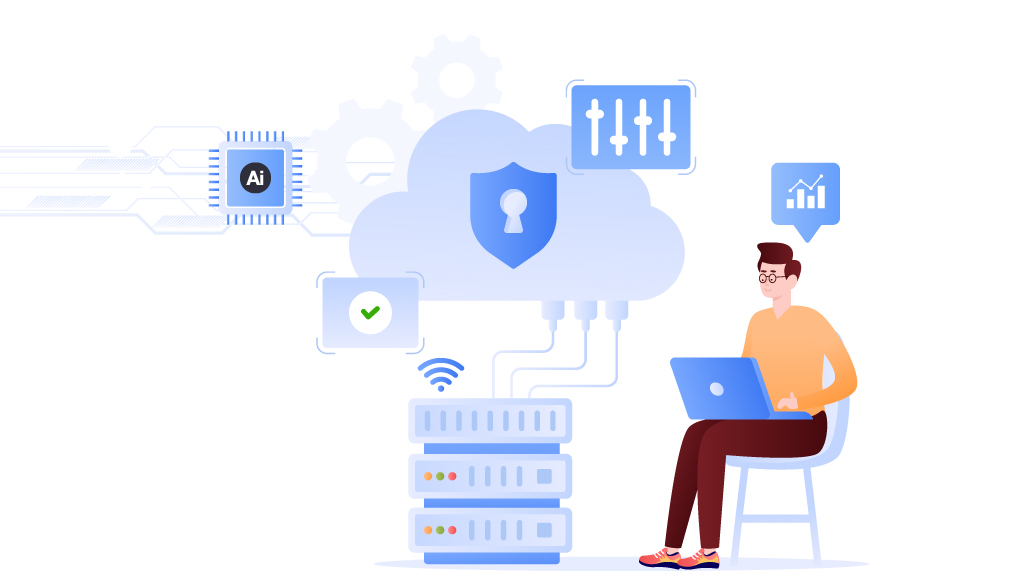
Preparing for Tomorrow
Smart organizations aren’t waiting. They’re building AI-ready infrastructure today:
- Standardizing data formats across tools
- Training teams on AI concepts
- Creating feedback loops for continuous improvement
- Building relationships between IT and business units
The companies thriving tomorrow are laying groundwork today.
Conclusion
Still relying on traditional monitoring is like driving a horse and buggy on today’s digital highway. Competitors are already using AI-powered network monitoring to predict and prevent outages, while others stay stuck reacting to alerts.
This shift to AI observability isn’t just a tech upgrade; it’s how modern enterprises cut downtime, boost reliability, and deliver better customer experiences. And it’s happening now, with organizations seeing results in weeks, not years.
Ready to move from firefighting to foresight? Explore how ScoutITAi’s predictive analytics and patented Reliability Path Index (RPI) can simplify complexity and turn monitoring chaos into clarity. Book a demo today.
Frequently Asked Questions
Think of traditional monitoring like a security camera—it records what happens but doesn’t understand what it sees. AI-powered observability is like having a expert analyst watching those cameras 24/7, spotting patterns, predicting problems, and explaining issues in plain language. Traditional tools alert after problems occur; AI platforms prevent problems from happening.
Modern AI platforms are designed to be Switzerland—neutral and friendly with everyone. They connect to your existing tools through APIs, agents, or data feeds. You keep using Splunk, Dynatrace, or whatever you have. The AI platform sits on top, correlating data and providing unified insights. No rip-and-replace needed.
If downtime costs you money or reputation, you need this. That includes:
- E-commerce sites where every minute of downtime equals lost sales
- Financial services where availability equals trust
- Healthcare systems where uptime can literally save lives
- Any business running complex, hybrid infrastructure
- Companies tired of their IT team burning out from alert fatigue
Faster than you’d think. Most organizations see wins within 30 days—usually from prevented outages or reduced troubleshooting time. Full ROI typically hits at 3-6 months. One client told me they saved enough in prevented downtime in the first month to pay for the entire year’s license. After 12 months, expect 200-300% ROI from prevented outages, optimized resources, and improved team productivity.
Absolutely. This is often a surprise benefit. AI-powered cloud monitoring software spots overprovisioned resources, identifies usage patterns, and recommends optimizations. One client reduced their AWS bill by 34% just by following AI recommendations. The platform noticed they were running expensive instances 24/7 for workloads that only needed power during business hours. Simple fix, massive savings.

Tony Davis
Director of Agentic Solutions & Compliance

